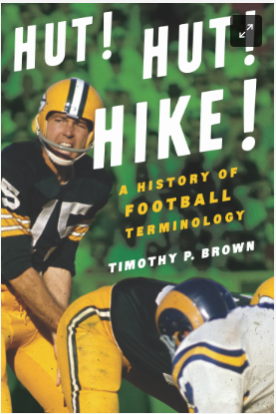The game of baseball has a long and storied history of its players, teams and managers. The stats, the championships, pitching duels and so much more make this one of the most interesting items to study and watch.
Sports History
Willie Wells Baseball Star Shortstop
Born August 10, 1906, in Austin, Texas, Baseball Hall of Fame Shortstop Willie Wells. This legend was a 10-time Negro League All Star, and a two-time Cuban League MVP. Wells was a fast base-runner who hit for both power and average.
He was at his finest with his glove, committing almost no errors and having the speed to run down most anything. Wells is also known as being the first player to use a batting helmet in baseball, after being hit and receiving a concussion while playing with the Newark Eagles. Interestingly enough, that first helmet was a construction helmet.
Here are the teams that Wells played with:
St. Louis Giants (1924)
St. Louis Stars (1924–1931)
Detroit Wolves (1932)
Homestead Grays (1932, 1937)
Kansas City Monarchs (1932)
Chicago American Giants (1929, 1933–1935)
Newark Eagles (1936–1939, 1942, 1945)
Birmingham Black Barons (1941)
New York Black Yankees (1945–46)
Baltimore Elite Giants (1946)
Indianapolis Clowns (1947)
Memphis Red Sox (1948)
Ivan Rodriguez Baseball Catcher and Hitter
Rodríguez is widely regarded as one of the greatest catchers in MLB history. He played for the Texas Rangers, Florida Marlins, Detroit Tigers, New York Yankees, Houston Astros and Washington Nationals.
The 2003 World Series with the Florida Marlins and played in the 2006 World Series with the Tigers. 2009 he set an MLB record by catching his 2,227th game, passing Carlton Fisk. He had the best career caught-stealing percentage of any major league catcher, at 45.68%.
Rodriguez is one of the top MLB players to have worn the Number 7 Jersey.
Herb Pennock and His Winding Baseball Road
Debuting for the Philadelphia Phillies at the tender age of 18 in 1912, Pennock's early years were marked by inconsistency. Yet, his raw talent was undeniable. He showcased a deceptive fastball, a sharp curveball, and a masterful changeup, keeping hitters off balance. By 1914, he had established himself as a reliable starter, and in 1915, he led the National League with 27 wins, a feat he would repeat two years later.
He spent his prime years with the Philadelphia Athletics and Boston Red Sox, consistently putting up impressive numbers. He led the league in ERA twice and won over 20 games in three seasons, showcasing his mastery over his new pitching style. His calm demeanor under pressure made him a go-to starter in crucial games, earning him the nickname "The Nerves of Steel."
Pennock's career wasn't without its challenges. He was traded multiple times, facing new teams and environments, but his adaptability and dedication to his craft remained constant. In 1931, at the age of 34, he defied expectations by leading the New York Yankees to a World Series victory, cementing his legacy as a big-game pitcher.
Early Wynn's Journey from Mound to Hall of Fame
His early years were a struggle. Drafted by the Washington Senators, Wynn's raw talent couldn't overcome the team's mediocrity. Traded to the Cleveland Indians in 1948, however, he found his spark. Under the tutelage of Mel Harder and manager Al Lopez, Wynn honed his natural fastball and developed a deceptive sidearm delivery, earning the nickname "The Big Texan."
The 1950s became Wynn's decade. He dominated the American League, winning 20 or more games four times, leading the league in earned run average twice, and anchoring a fearsome pitching rotation alongside Bob Lemon, Bob Feller, and Mike Garcia. His fiery competitiveness was legendary, intimidating batters with his glare and a willingness to knock down anyone who dared cross him. Ted Williams, no stranger to fear, called Wynn "the toughest pitcher I ever faced."
Yet, beyond the bravado, Wynn possessed a keen baseball mind. He studied hitters, perfected his off-speed pitches, and mastered the art of pitching inside, earning the respect of even those he terrified at the plate. In 1954, he led the Indians to the World Series, falling just short of a championship.
As time etched lines on his face and wear on his arm, Wynn refused to fade. He adapted, embracing the knuckleball in his late 30s, extending his career into the 1960s. Although he never reached the World Series again, he achieved baseball's ultimate honor in 1962: induction into the Hall of Fame.
Wynn's legacy extends beyond his 300 victories and four Cy Young Awards. He was a pioneer for Southern baseball players, proving that talent could overcome regional prejudice. He challenged the rigid masculinity of the era, embracing his Texas cowboy persona and refusing to conform to conventional baseball norms.
Early Wynn's story is a reminder that greatness doesn't always require the blinding light of the spotlight. It can reside in the quiet determination of a pitcher who carved his own path.
Gil Hodges The Anchoring Force Behind Championships
Rising Star in Brooklyn: Starting as a catcher, Hodges transitioned to first base, showcasing his power and agility. He earned eight All-Star selections, led the league in RBIs three times, and clubbed 370 home runs, ranking third among right-handed hitters only behind Jimmie Foxx and Willie Mays at the time of his retirement. His signature moment came in 1950 when he became the fourth player in MLB history to hit four home runs in a single game.
Championship Pedigree: Hodges was synonymous with winning. He played a crucial role in six National League pennants with the Dodgers and two World Series titles, in 1955 and 1959. His defensive prowess, earning three Gold Glove awards, and powerful bat were vital components of the team's success.
Born April 4, 1924, in Princeton, Indiana, was Baseball Hall of Fame First Baseman Gil Hodges. Hodges played the positions of First Base, Catcher, Left Field, Third Base, Right Field, Center Field, and Second Base wearing the number 14 on the Brooklyn Dodgers (1947-57), Los Angeles Dodgers (1958-61), and the New York Mets (1962-63) for 18 seasons as he batted 0.273 for his career, had an On Base percentage of 0.487, with 370 career Home Runs, and 3 Gold Glove Awarded Seasons.
Jim Edmonds
The Quiet Captain Who Conquered the Diamond
Born in Rhode Island, Collins' career bloomed in Boston. Traded from St. Louis in 1901, he found his true home at Fenway Park. His batting average, consistently hovering around .300, might not scream greatness, but it concealed a quiet mastery of the game. He had a surgeon's precision at the plate, peppering line drives and finding gaps with uncanny accuracy. He rarely struck out, a testament to his patience and baseball IQ.
But Collins' impact transcended mere statistics. He was a defensive wizard at third base, his nimble hands and lightning-fast throws making him a wall against grounders. He orchestrated the infield with the grace of a conductor, calling plays and directing traffic with unerring instincts. His calm demeanor brought stability, grounding the team even in the stormiest of games.
He wasn't just a skilled player; he was a natural leader. Nicknamed "Big Brother" for his quiet guidance, he nurtured young teammates, instilling in them the Red Sox way. He spoke with his actions, leading by example with his tireless work ethic and unyielding determination. His quiet confidence resonated through the dugout, a pillar of strength in the face of adversity.
Collins' legacy isn't measured in flashy awards or gaudy headlines. He led the Red Sox to two World Series appearances, but his truest impact lies in the countless games where his steady hand calmed nerves, his clutch hit lit a spark, or his defensive brilliance saved the day.
Paul Waner Legend of the Line Drive
Waner's professional journey began in 1926 with the Pittsburgh Pirates. He quickly established himself as a force to be reckoned with, leading the league in batting average in his second season at a staggering .380. This offensive outburst was just the beginning, as Waner would go on to win two more batting titles throughout his career, solidifying his reputation as one of the game's finest hitters.
Unlike the "dead ball" era that preceded him, Waner thrived in the "lively ball" era of the 1920s and 30s. His approach to hitting was a study in precision. He possessed a keen understanding of the strike zone and a remarkable ability to put the bat on the ball consistently. This resulted in an astounding eight seasons with over 200 hits, a feat rarely seen today. Waner wasn't just a singles hitter either, accumulating a healthy amount of doubles and triples, showcasing his well-rounded offensive skillset.
Beyond his offensive prowess, Waner was a valuable asset defensively. Patrolling centerfield with grace and agility, he combined excellent range with a strong throwing arm, making him a complete package on the field.
Waner's dedication to the game was legendary. His tireless work ethic and meticulous preparation earned him the respect of his teammates and the admiration of fans. He even displayed remarkable longevity, playing a remarkable 20 seasons, a testament to his dedication and physical conditioning.
In 1942, Waner achieved a milestone coveted by all hitters – joining the prestigious 3,000-hit club. His final career batting average of .333 stands as a lasting testament to his brilliance at the plate. His induction into the National Baseball Hall of Fame in 1952 further cemented his place among baseball's elite.
Born April 16, 1903, in Harrah, OK, was Baseball Hall of Fame Right Fielder, Paul Waner. for four teams between 1926 and 1945, most notably playing his first 15 seasons with the Pittsburgh Pirates.
Paul also played for the Brooklyn Dodgers (1941 and 1943–1944), Boston Braves (1941–1942), and the New York Yankees (1944–1945). The greatest Pirate outfielder up to his retirement, he won the 1927 NL Most Valuable Player Award in his second season. Paul Waner batted 0.333 for his career, had an On Base percentage of 0.473, with 113 career Home Runs. Waner was one of the top MLB players to have worn the Number 9 Jersey.
Bullet Rogan Baseball Hall of Fame Arm
Born July 28, 1893, in Oklahoma City, Oklahoma, was Baseball Hall of Fame Pitcher, Outfielder, and Manager Wilbur "Bullet" Rogan. Bullet Rogan was an American Negro League baseball pitcher and manager. He is considered one of the greatest pitchers in Negro League history.
Rogan's early baseball career took place in the U.S. Army, where he played for a famous team in the all-black 25th Infantry. After joining the Kansas City Monarchs, he was the top pitcher and one of the best hitters on a team that won three pennants from 1923 to 1925 and the 1924 Colored World Series.
He became a playing manager in 1926 and led his team to another league title in 1929. Rogan was a smart pitcher with a wonderful memory. He never forgot a batter's weaknesses and strong points. His fastball was almost too fast to catch, and he was also a skilled curveball pitcher. Rogan was inducted into the Baseball Hall of Fame in 1998.
Bill Foster Baseball Hall of Fame Pitcher
February 7 Jersey Numbers

Here are some jersey numbers in team sport history that stuck out. February 7, 1949 - Number 5, Joe DiMaggio became the first ball player to earn $100,000 a yearas he did so under contract with the New York Yankees . February 7, 1958 - The Brooklyn Dodgers official...
- The use of a "banner" counts as 10 words!
February 6 Jersey Numbers
Sports history is made every day of the year. We will preserve at least a small sampling from some great athletes every day based on the uniform number they wore. 31 - 9 - 14 - 83 - 7 - 16 - 22 - 80 - 11 - 84 - 10 - 83 - 12 February 6, 1926 - St Louis Browns acquire catcher Wally Schang from ...
February 5 Jersey Numbers

Here is what happened in Sports Jersey History on February 5: Kareem hits a new NBA high, Hines hauls in a big one and Bob Douglas is honored. Our Sports Jersey Take of the Day is from historian Joe Ziemba. Listen in to learn more about sports history along with me from the unif...
- The use of a "banner" counts as 10 words!
The Oregon Agricultural Hard Court Stars
(image) Members of the 1922 Oregon Agricultural College men's basketball team. From left to rightː Gill (forward), Hjeite (enter), and Feraley (forward), from February 5, 1922. This image is courtesy of Wikimedia Commons. We know the OAC by a different name today, Oregon State. The Oregon Ag...
The 1897 Strathcona Hockey Team
.jpg?https://jerseydispatch.com/pfeL/p/c312642c0431e75b485e432232c99c1c/website/Sports-History-Photo-of-the-Day/February-Images/February-4-Image/images/.Strathconas_First_Hockey_Team_(21879505322).jpg)
Formal portrait of Strathcona's First Hockey Team (1897). Stratchcona resides in British Columbian Province, and is the oldest residential neighbourhood of Vancouver, (image) Some players are labeled by number. 1. Bob Blain 2. Jim Blain 3. Billy Sharkles 4. Fred Richards 5. J. McIn...
- The use of a "banner" counts as 10 words!
February 4 Jersey Numbers

Here is what happened in Sports Jersey History on February 4 : We talk about the great goaltending of Grant Fuhr and Ray Durbin of Row One Brand stops by to to discuss two of his favorite number 40s. Listen in to learn more about sports history along with me from the uniforms and jers...
- The use of a "banner" counts as 10 words!






